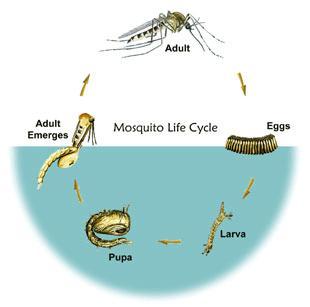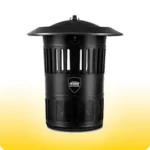Mosquitoes As Pests: Signs, Symptoms, Prevention and Control

What is the diet of a mosquito?
What is a mosquito’s life-cycle?
How do you prevent and control mosquito infestations?
Traps for outdoor mosquito control
Stubborn mosquitoes can make it difficult for you to enjoy peace and tranquillity at home. Mosquitoes bite painfully and make an irritating noise as they fly making it very difficult to sleep well at night.
But mosquitoes won’t only cause pain and irritation when they come into your home; these pests are also dangerous disease vectors that transmit numerous diseases including Malaria, Dengue fever, West Nile virus, yellow fever among others.
Scientifically, mosquitoes are placed in the group Diptera because they only have one pair of wings. Their most notable identifiers are their prominent mouthpart known as the proboscis, and long, thin legs. It’s not all mosquito species that feed on animal blood, however; and in species that do, it’s only the females that feed on blood.
View our mosquito control products >
What is the diet of a mosquito?
Generally, mosquitoes feed on plant juices and nectar – even in species known to feed on blood. A blood meal is only required by the females of some species when they are about to lay eggs as it contains nutrients required for egg production. The mouthparts of these blood sucking mosquitoes are more developed and better adapted to piercing animal skin.
Mosquitoes mostly prey on pregnant women, people with the “O” blood type, those with lots of bacteria on their skin, heavy breathers, and people producing more body heat.
What is a mosquito’s life-cycle?

A mosquito’s lifecycle is divided into four stages: Egg, Larva, Pupa, and Adult. Immediately after mating, the female will start searching for animal blood to acquire nutrients needed for egg production. Once she has had her blood meal, the female mosquito will then search for still water in which she’ll lay her eggs in. A female can lay up to 100 eggs at a time. The laid eggs will hatch into larvae in about 48 hours depending on conditions.
The larvae live in water but will come up occasionally to breath. While they develop, the larvae will feed on organic matter and micro-organisms in the water. After moulting four times, the larva will develop into pupa.
The pupa stage is also referred to as the resting stage. This is a non-feeding stage where the immature mosquito will develop rapidly and form all its distinctive features. Although at rest, pupa will tumble using their tails to adjust to light changes.
Once development is complete, the pupal skin will split to release the fully developed mosquito. The entire process takes about 14 days.
(Source: http://www.mosquito.org/life-cycle)
View our mosquito control products >
How do you prevent and control mosquito infestations?
At this point, we’ve already learnt that ordinarily mosquitoes feed on plant juices and nectar. It is only when females are about to lay eggs that they feed on blood. We’ve also learnt that stagnant water is a crucial requirement for mosquito breeding.
To ensure mosquitoes don’t invade your home, take the following measures:
- Keep your property neat and tidy by mowing your lawn and clearing overgrown bushes and vegetation. These will not only provide food for mosquitoes but shelter too where mosquitoes can thrive.
- Drain stagnant water in and around your property to deny mosquitoes of breeding places.
- Close your windows and doors (especially at night) if they are not screened for mosquitoes.
- Use mosquito repellers to keep mosquitoes out of your home.
Traps for outdoor mosquito control
Mosquitoes are not only a nuisance indoors but outdoors too especially in summer when barbecues are popular. For outdoor protection against mosquitoes, use traps to capture these stubborn pests.
Effective models will use a combination of heat and carbon dioxide to bait the mosquitoes for the best results. Trapping is better than zapping as it is more discreet, more effective, and cleaning up the trap is less of a hassle.

View our mosquito control products > займ пенсионераминтернет займзайм переводом contact




 Mosquito Traps
Mosquito Traps